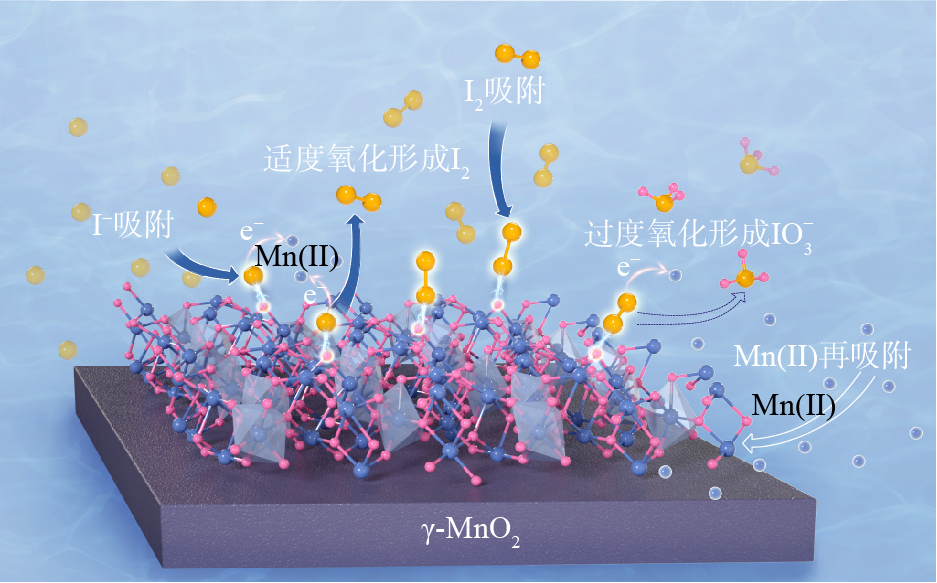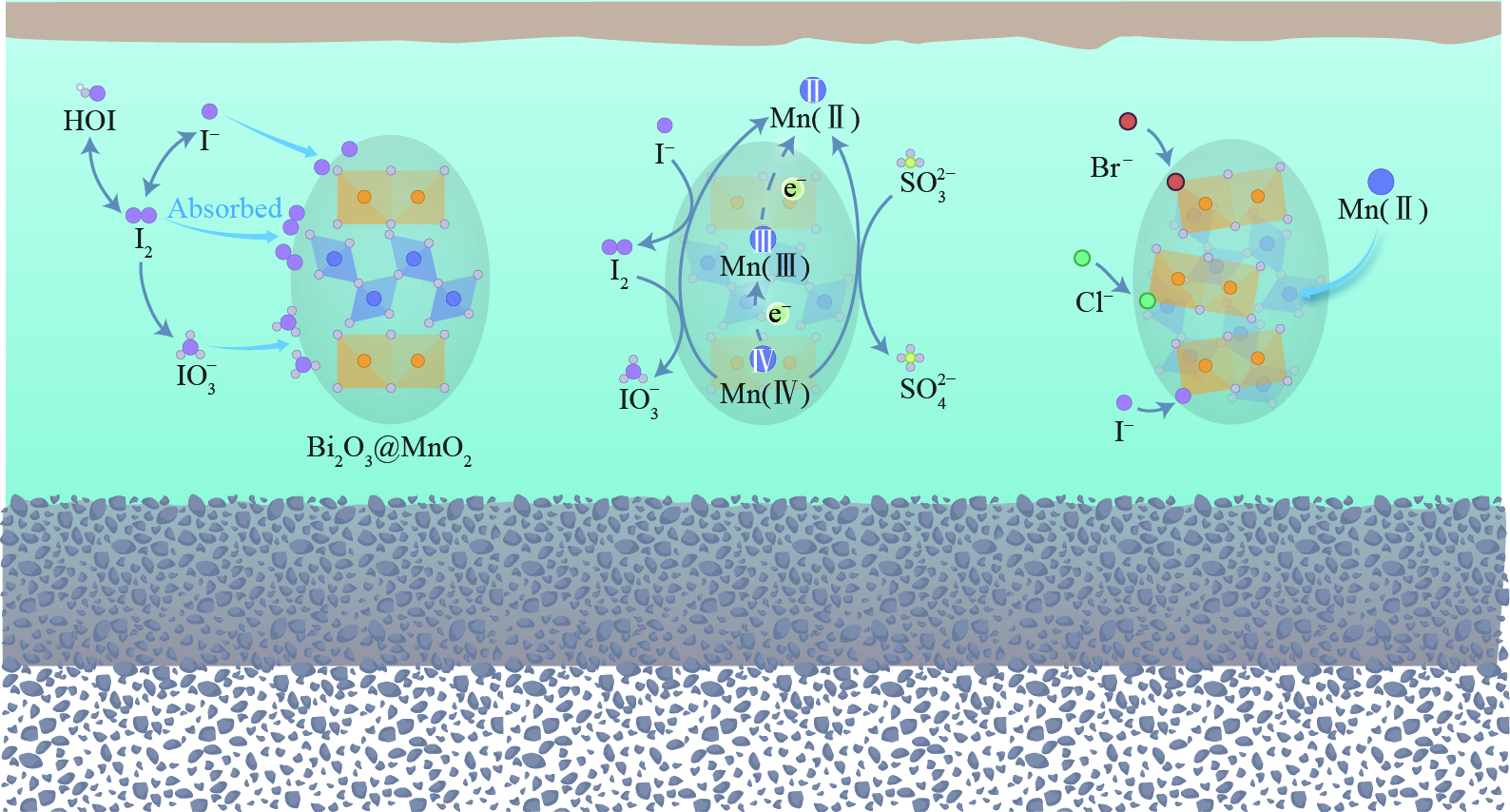我国典型电子垃圾循环区域人体血清中得克隆浓度及时间变化趋势
The concentrations and temporal trend of dechlorane plus in human serum collected from a typical e-waste recycling area in China
-
摘要: 得克隆(dechlorane plus,DP)是一种新型阻燃剂.本研究以我国浙江省台州市典型电子垃圾循环区域LQ为研究区域,以生活于该区域的普通人群及电子垃圾拆解工人为研究对象,开展了DP的人群负荷及近4年间(2014-2018年)人群负荷变化趋势的研究.研究结果显示,LQ地区2014年普通人群血清DP负荷平均值为6.31 ng·g-1脂重(lipid weight,lw),2018年为6.53 ng·g-1lw;高于非电子垃圾拆解区普通人群.2018年,LQ地区电子垃圾拆解工人血清DP水平中值为52.8 ng·g-1lw,高于当地普通人群血清水平.2014年至2018年,普通人群血清DP水平没有明显变化.DP血清水平与性别及年龄没有显著相关性.2018年,LQ地区普通人群血清fanti[anti-DP/(syn-DP+anti-DP)]平均值为0.65,电子垃圾拆解工人血清fanti平均值为0.52,前者显著高于后者(P<0.001).血清fanti值可被用于初略判断研究对象的特征,即研究人群为普通人群,生活于DP污染区的普通人群,还是直接受到高水平DP暴露的职业工人;确切的结论还有待开展进一步的研究予以阐明.研究结果可以为评价LQ地区DP的人群暴露风险提供基础数据,为决策者制定DP的全球应用策略提供数据支持.Abstract: Dechlorane plus (DP) is an emerging chlorinated flame retardant. In this study, the serum samples from the general population and e-waste dismantling workers living in LQ town, a typical e-waste recycling site in southeastern China, were collected to investigate DP body burden and temporal trend during the past four years (2014-2018). The median values of ∑ DPs levels in the general population were 6.31 ng·g-1 lipid weight (lw) in 2014 and 6.53 ng·g-1 lw in 2018, respectively. Both were exactly higher than those in the general population from other non-electric waste recycling regions. The median value of ∑ DPs levels in dismantling occupational population in 2018 was 52.8 ng·g-1lw, significantly higher than the DP levels in LQ general population. No statistical differences of DP serum concentrations in LQ general population were observed between 2014 and 2018. DP serum levels showed an insignificant correlation with either human ages or gender. In 2018, the mean value of serum fanti was 0.65 in the general population, and 0.52 in e-waste dismantling workers, respectively. The serum fanti could be used to indicate some population characteristics. For instance, research subjects were the general population from DP non-contaminated areas, or the general population living nearby the contaminated areas as well as the occupational population highly exposed to DP. Further researches are required to confirm this finding. Our results provided important data for the environmental risk assessment of DP in LQ region and for the global application strategy of DP.
-
Key words:
- E-waste /
- DP /
- human serum /
- temporal trend
-
近年来,长期饮用高碘水产生的甲状腺疾病以及区域性人群健康问题得到高度关注。国家卫健委《全国生活饮用水水碘含量调查报告》中指出,我国水源性高碘地区 (水碘含量>100 μg·L−1) 分布于61个旗县,涉及人口超过3000万人;《生活饮用水卫生标准》 (GB 5749) 将碘化物纳入监管,最大质量浓度限值为0.1 mg·L−1。但是,国内外内仍缺乏饮用水碘化物去除控制的成熟工艺和成功范例,难以有效支撑新国标的实施。在国家自然科学杰出青年科学基金 (批准号:51925807) 等资助下,清华大学刘锐平教授团队在饮用水碘化物非均相转化与控制原理方面取得重要进展,相关成果已在Environmental Science Technology和Water Research等学术期刊上发表。
碘化物以一价阴离子形式存在,极难吸附在固相表面,倘若能构造适配界面并有效调控碘化物的形态转化,建立碘化物非均相转化与吸附方法,就有可能实现饮用水除碘技术的重要突破。该研究团队首先制备了具有不同氧化性能和界面特性的α、β、γ和δ等不同晶型MnO2, 发现γ-MnO2具有最优的除碘性能,并证实这主要是由于其适度氧化和最佳吸附能力所致 (图1) ; 基于XPS仪器分析了γ-MnO2表面碘元素形态,结果显示,碘化物和活性碘 (HOI+I2) 分别占比为62.5%和37.5%;想比而言,α-和β-MnO2氧化性能最弱,难以获得电子将碘化物氧化为活性碘,具有过强氧化能力的δ-MnO2则将碘化物转化为更难吸附的碘酸盐 (IO3−) 。基于密度泛函理论 (DFT) 的计算结果表明,碘原子在γ-MnO2(131)晶面上吸附能最低,而价带与导带之间的轻微重叠有利于碘化物的非均相氧化。以上相关成果发表于Environmental Science Technology (2022, 56, 13, 9417–9427)。该研究团队还进一步构造了兼具氧化和吸附性能的Bi2O3@MnO2非均相界面,发现Bi2O3@MnO2除碘性能远高于MnO2,且对I−、I2和IO3−等不同形态碘均表现出良好去除性能;研究结果证实,Bi2O3@MnO2中MnO2的主要发挥适度氧化和吸附I−、I2的作用,Bi2O3则对I−和IO3−具有优异性能,I−在Bi2O3表面生成了BiOI;DFT计算显示,I−、I2和IO3−等在Bi2O3@MnO2表面的吸附自由能分别为-2.34 eV、-2.11 eV和-3.89 eV。Bi2O3与MnO2之间非均相氧化与吸附的协同作用极大地提升了除碘吸附容量和反应速率,具有很好的技术优势。前述相关成果已在线发表于Water Research (https://doi.org/10.1016/j.watres.2022.118965) 。
该研究团队揭示了以碘化物非均相转化与吸附为基础的饮用水除碘原理 (图2) ,对饮用水除碘、工业高碘废水、碘放射性废水处理等涉及的材料和工艺设计具有重要应用价值和指导意义。此外,结合饮用水新国标实施和水质安全保障需求,该研究团队提出的除碘工艺方案得到内蒙古自治区水利厅的认可和批复,预计2023年内将在内蒙古自治区通辽市科左中旗开展3个单村饮用水除碘技术示范。
-
[1] SVERKO E, TOMY G T, REINER E J, et al. Dechlorane plus and related compounds in the environment:A review[J]. Environmental Science & Technology, 2011, 45(12):5088-5098. [2] RECHE C, VIANA M, QUEROL X, et al. Particle-phase concentrations and sources of legacy and novel flame retardants in outdoor and indoor environments across Spain[J]. Science of the Total Environment, 2019, 649:1541-1552. [3] HOH E, ZHU L A, HITES R. Dechlorane plus, a chlorinated flame retardant, in the Great Lakes[J]. Environmental Science & Technology, 2006, 40(4):1184-1189. [4] JI X W, XIE X C, DING J, et al. Chlorinated flame retardant dechlorane plus:Environmental pollution in China[J]. Environmental Reviews, 2018, 26(3):273-285. [5] MöLLER A, XIE Z, STURM R, et al. Large-scale distribution of dechlorane plus in air and seawater from the arctic to antarctica[J]. Environmental Science & Technology, 2010, 44(23):8977-8982. [6] ZHANG X, WANG S, GUO T, et al. Genome analysis of Lactobacillus fermentum temperate bacteriophage ФPYB5[J]. International Journal of Food Microbiology, 2011, 144(3):400-405. [7] YU L, LUO X, ZHENG X, et al. Occurrence and biomagnification of organohalogen pollutants in two terrestrial predatory food chains[J]. Chemosphere, 2013, 93(3):506-511. [8] GUO J, VENIER M, SALAMOVA A, et al. Bioaccumulation of Dechloranes, organophosphate esters, and other flame retardants in Great Lakes fish[J]. Science of the Total Environment, 2017, 583:1-9. [9] 刘阳. 得克隆对斑马鱼毒性效应的研究[D]. 大连:大连海事大学, 2011. LIU Y. Comprehensive toxicity study of dechlorane plus on zebrafish[D]. Dalian:Dalian Maritime University, 2011(in Chinese). [10] J BROCK W, E SCHROEDER R, A MCKNIGHT C, et al. Oral repeat dose and reproductive toxicity of the chlorinated flame retardant dechlorane plus[J]. International Journal of Toxicology, 2010, 29(6):582-593. [11] Inclusion of substances of very high concern in the Candidate List for eventual inclusion in Annex XIV[EB/OL].[2018-12-01]. https://echa.europa.eu/documents/10162/23f967f0-d76c-c59c-6af3-c865006599b8. [12] XU P, TAO B, ZHOU Z, et al. Occurrence, composition, source, and regional distribution of halogenated flame retardants and polybrominated dibenzo-p-dioxin/dibenzofuran in the soils of Guiyu, China[J]. Environmental Pollution, 2017, 228:61-71. [13] ONGONDO F O, WILLIAMS I, CHERRETT T. How are WEEE doing? A Global review of the management of electrical and electronic wastes[J]. Waste Management, 2011, 31(4):714-730. [14] REN G, YU Z, MA S, et al. Determination of dechlorane plus in serum from electronics dismantling workers in South China[J]. Environmental Science & Technology, 2009, 43(24):9453-9457. [15] CHEN K H, ZHENG J, YAN X, et al. Dechlorane plus in paired hair and serum samples from e-waste workers:Correlation and differences[J]. Chemosphere, 2015, 123:43-47. [16] CHAN J K Y, XING G H, XU Y, et al. Body loadings and health risk assessment of polychlorinated dibenzo-p-dioxins and dibenzofurans at an intensive electronic waste recycling site in China[J]. Environmental Science & Technology, 2007, 41(22):7668-7674. [17] ZHOU S S, FU J, HE H, et al. Spatial distribution and implications to sources of halogenated flame retardants in riverine sediments of Taizhou, an intense e-waste recycling area in eastern China[J]. Chemosphere, 2017, 184:1202-1208. [18] 孙慧中,李英明,王璞,等.电子垃圾拆解地大气中得克隆的分布特征[C]//中国化学会第30届学术年会-第二十六分会:环境化学, 2016:1. SUN H Z, LI Y M, WANG P, et al. Atmospheric levels and distribution of dechlorane plus in an e-waste dismantling region of East China[C]//The 30th Annual Meeting of the Chinese Chemical Society, the 26th branch:Enviromental chemistry, 2016 :1(in Chinese).
[19] BEN Y J, LI X H, YANG Y L, et al. Dechlorane plus and its dechlorinated analogs from an e-waste recycling center in maternal serum and breast milk of women in Wenling, China[J]. Environmental Pollution, 2013, 173:176-181. [20] LV Q X, WANG W, LI X H, et al. Polychlorinated biphenyls and polybrominated biphenyl ethers in adipose tissue and matched serum from an E-waste recycling area (Wenling, China)[J]. Environmental Pollution, 2015, 199:219-226. [21] FRINGS C S, FENDLEY T W, DUNN R T, et al. Improved determination of total serum lipids by the sulfo-phospho-vanillin reaction[J]. Clinical Chemistry, 1972, 18(7):673-674. [22] MA Y, LI P, JIN J, et al. Current halogenated flame retardant concentrations in serum from residents of Shandong Province, China, and temporal changes in the concentrations[J]. Environmental Research, 2017, 155:116-122. [23] HE S, LI M, JIN J, et al. Concentrations and trends of halogenated flame retardants in the pooled serum of residents of Laizhou Bay, China[J]. Environmental Toxicology and Chemistry, 2013, 32(6):1242-1247. [24] KIM J, SON M, SHIN E, et al. Occurrence of dechlorane compounds and polybrominated diphenyl ethers (PBDEs) in the Korean general population[J]. Environmental Pollution, 2016, 212:330-336. [25] ZHOU S N, SIDDIQUE S, LAVOIE L, et al. Hexachloronorbornene-based flame retardants in humans:Levels in maternal serum and milk[J]. Environment International, 2014, 66:11-17. [26] BRASSEUR C, PIRARD C, SCHOLL G, et al. Levels of dechloranes and polybrominated diphenyl ethers (PBDEs) in human serum from France[J]. Environment International, 2014, 65:33-40. [27] YAN X, ZHENG J, CHEN K H, et al. Dechlorane plus in serum from e-waste recycling workers:Influence of gender and potential isomer-specific metabolism[J]. Environment International, 2012, 49:31-37. [28] ZHENG J, WANG J, LUO X J, et al. Dechlorane plus in human hair from an e-waste recycling area in South China:Comparison with dust[J]. Environmental Science & Technology, 2010, 44(24):9298-9303. [29] REN G F, YU Z, MA S, et al. Determination of dechlorane plus in serum from electronics dismantling workers in South China[J]. Environmental Science & Technology, 2009, 43(24):9453-9457. [30] QIAO L, ZHENG X B, YAN X, et al. Brominated flame retardant (BFRs) and dechlorane plus (DP) in paired human serum and segmented hair[J]. Ecotoxicology and Environmental Safety, 2018, 147:803-808. [31] YANG Q Y, QIU X H, LI R, et al. Exposure to typical persistent organic pollutants from an electronic waste recycling site in Northern China[J]. Chemosphere, 2013, 91(2):205-211. [32] GUERRA P, FERNIE K, JIMENEZ B, et al. Dechlorane plus and related compounds in peregrine falcon (falco peregrinus) eggs from canada and spain[J]. Environmental Science & Technology, 2011, 45(4):1284-1290. [33] WANG D G, YANG M, QI H, et al. An asia-specific source of dechlorane plus:Concentration, isomer profiles, and other related compounds[J]. Environmental Science & Technology, 2010, 44(17):6608-6613. [34] SVERKO E, TOMY G T, MARVIN C H, et al. Dechlorane plus levels in sediment of the Lower Great Lakes[J]. Environmental Science & Technology, 2008, 42(2):361-366. [35] WANG P, ZHANG Q, ZHANG H, et al. Sources and environmental behaviors of dechlorane plus and related compounds-A review[J]. Environment International, 2016, 88:206-220. [36] XIAO X, HU J F, PENG P A, et al. Characterization of polybrominated dibenzo-p-dioxins and dibenzofurans (PBDDs/Fs) in environmental matrices from an intensive electronic waste recycling site, South China[J]. Environmental Pollution, 2016, 212:464-471. [37] ZHU J, FENG Y L, SHOEIB M. Detection of dechlorane plus in residential indoor dust in the city of Ottawa, Canada[J]. Environmental Science & Technology, 2007, 41(22):7694-7698. [38] ZHANG H, WANG P, LI Y, et al. Assessment on the occupational exposure of manufacturing workers to dechlorane plus through blood and hair analysis[J]. Environmental Science & Technology, 2013, 47(18):10567-10573. [39] WU Q, LI H, KUO D T F, et al. Occurrence of PBDEs and alternative halogenated flame retardants in sewage sludge from the industrial city of Guangzhou, China[J]. Environmental Pollution, 2017, 220:63-71. [40] ZHU B, LAI N L S, WAI T C, et al. Changes of accumulation profiles from PBDEs to brominated and chlorinated alternatives in marine mammals from the South China Sea[J]. Environment International, 2014, 66:65-70. [41] 李文兵, 候佳艾, 徐超超. 促进台州金属资源再生产业可持续发展的研究与建设[J]. 再生资源与循环经济, 2017, 10(11):13-16. LI W B, HOU J A, XU C C. Research and construction of sustainable development of Taizhou metal resource recycling industry[J]. Recyclable Resources and Circular Economy, 2017, 10(11):13-16(in Chinese).
[42] BEN Y J, LI X H, YANG Y L, et al. Placental transfer of dechlorane plus in mother-infant pairs in an E-waste recycling area (Wenling, China)[J]. Environmental Science & Technology, 2014, 48(9):5187-5193. -

 点击查看大图
点击查看大图
计量
- 文章访问数: 3339
- HTML全文浏览数: 3339
- PDF下载数: 94
- 施引文献: 0




 下载:
下载:

